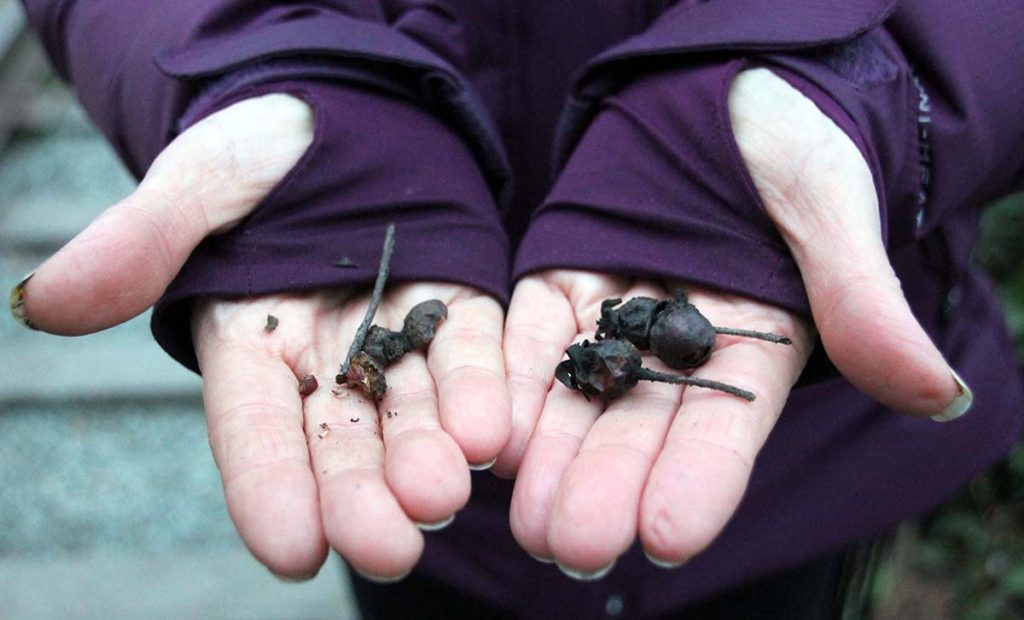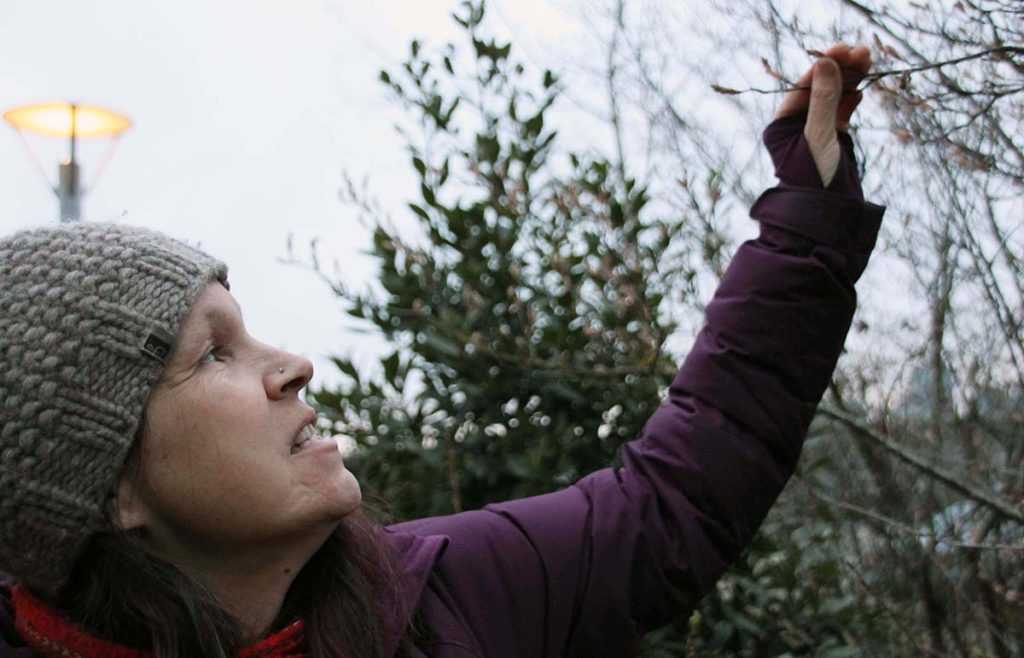Vancouver’s Indigenous community fight to save native plants at risk
By Sharon Nadeem and Seher Asaf

By Sharon Nadeem and Seher Asaf
Leonard Leboucan is crushing a tiny, brown piece of a bark-like plant with a pocket knife on his office desk.
“There needs to be more natural remedies,” says Leboucan, who is Metis and works at the Aboriginal Friendship Center in downtown Vancouver.
Leboucan uses this bitter-tasting plant to treat his colds and coughs. The plant is called rat-root or ek”splo-ra´shun and has been used as a herbal medicine by the Chipewyan people for centuries.
Rat root is one of the thousands of plants native to B.C. that have been historically used by Indigenous peoples to aid in every aspect of life, from medicines to weaving blankets.
But now, indigenous plants face all kinds of urban pressures, from development to competing with invasive species for space. According to the Native Plant Society of B.C., there are 312 plants in the province alone that are expatriated, endangered or threatened.
An oasis in the city
A tiny park in central Vancouver surrounded by skyscrapers, a stadium and a concrete parking lot looks exactly like the kind of place that is hostile to indigenous plants.

But to Metis herbalist Lori Snyder, Hinge Park is a “treasure trove”. She visits the park to fill her basket with indigenous plants, and conducts tours to share her knowledge of traditional medicines.
“If we sat down with our grandmother or great grandmother, she’d say that when someone got sick we’d find a plant that would help bring them back to health,” says Snyder.
Snyder grew up in Squamish B.C., where plants were always part of her life. She remembers winding her way down to the back woods near Alice Lake, which began a lifelong journey to know the roots, shrubs and trees surrounding her.
To her they aren’t just plants, they’re people.
“That was when I first learnt who they were. These were all native plants,” says Snyder.
Why are native plants important?
Snyder started learning about plants from elders and professors. She discovered that each plant has a purpose – some help in curing colds, others treat pain.
“Our health is really tied into our environment and we really need to tap into plants native to here,” says Snyder.

“I like to remind people that plants are our medicines and can clean the inside of the body. We need to put plants in to keep the body healthy.”
Snyder runs workshops to help people identify plants that they can use in their daily lives, whether it is traditional medicines or food. The workshops encourage people to grow these plants in their own backyards.
“We don’t need to go to the forest to do our foraging if we start to plant this in our community gardens. We can bring it down to our back alleyways and boulevards. We could even have it on the edges of parks.”
Leboucan echoes Snyder’s belief that sharing plant knowledge is an integral part of his culture. He is currently teaching his 7-year-old son how to gather indigenous plants and handle them with care.
“You get into the urban life and you end up neglecting to do things like going back to nature.” says Leboucan. “We should be doing more.”
Urban challenges
But it’s not always easy for Indigenous herbalists to carve out natural spaces in the city.

Cease Wyss introduced bees into Harmony Garden in 2012. (Facebook/Harmony Garden)
Cease Wyss, an ethno-botanist from Squamish First Nation, started Harmony Garden eight years ago with the hope of sustaining her community. Located on the Capilano reserve in West Vancouver, Wyss urges community members to gather their daily produce from the garden instead of heading to the grocery store.
Along with carrots, kale and potatoes, she grows indigenous plants like red willow, blackberry and hazelnut. But growing plants isn’t the problem in the garden.
“I came here two weeks ago to get the garden ready for spring and then there was a pile of garbage that the community likes to leave. I had to dig all that and throw it out,” says Wyss.
Wyss’ garden has been vandalized, tagged with graffiti and her garden tools are regularly stolen.
“I had a nervous breakdown four years ago because I spent three weeks pulling garbage out of the pond. I had to walk barefoot every day because it’s filled with a really delicate plant that is almost extinct.”
Despite those challenges, Wyss hasn’t stopped nurturing her garden.
“People come here and say, ‘This is an old neglected garden.’ But the birds don’t think so and the bees certainly don’t think so. This here is a food source for all kinds of species.”
Wyss says listening to the birds – and watching children and elders enjoy the garden – makes it all worth it.
“I do it all for the children. They are our future.” says Wyss.
Snyder agrees it is essential for future generations to be able to access natural spaces in the city such as Hinge Park.
“It’s a wonderful place where we can go and harvest – instead of going up to the mountains,” says Snyder.
Correction: Bees were introduced to Harmony Garden in 2012. The date was incorrect in an earlier version of this story.
Sharon Nadeem is a Vancouver-based multimedia journalist from India with a fascination for cultures and people. Follow her adventures on Twitter @sharon_nadeem
Seher Asaf is a Vancouver-based multimedia journalist from Hong Kong with an interest in immigration and diversity. Follow her on twitter @seher_a1